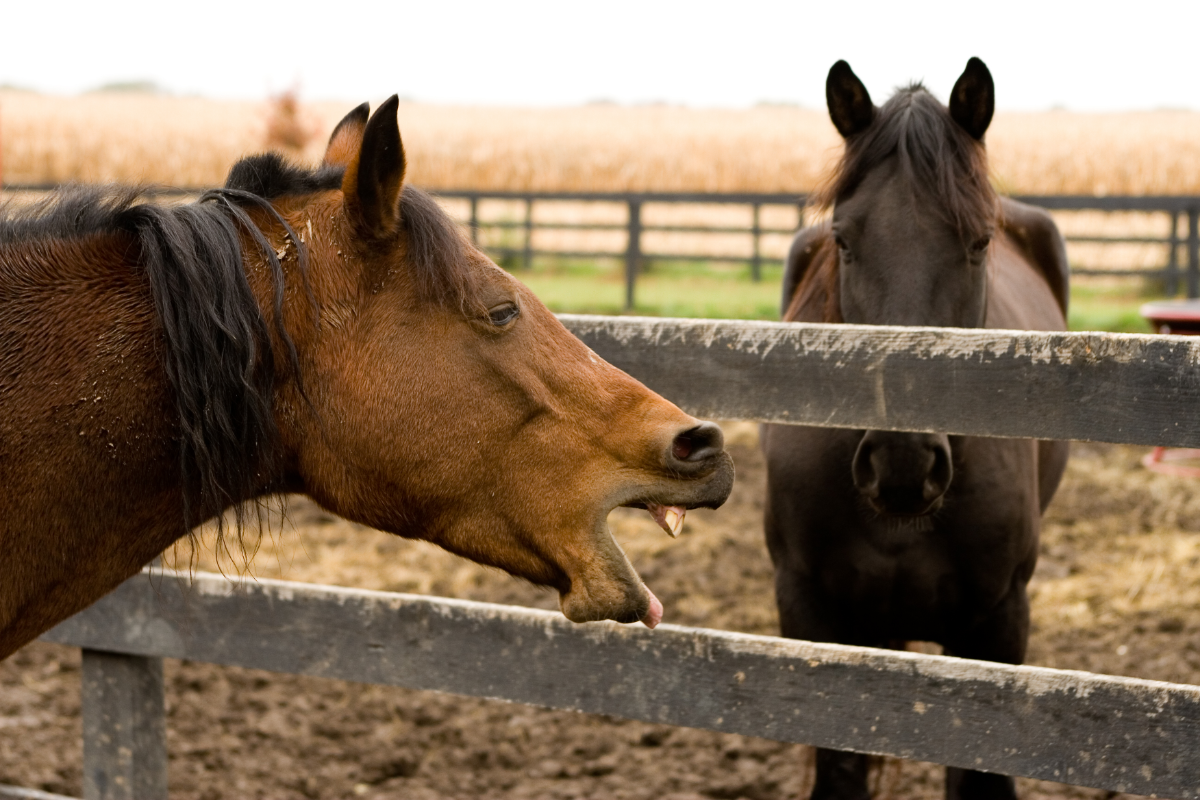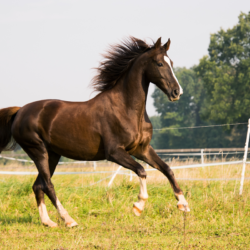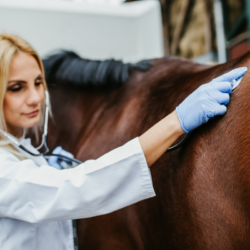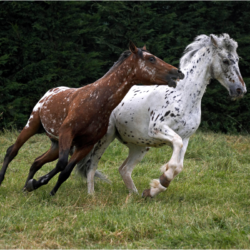Emphysema in horses, also known as “sprouting”, is a chronic respiratory disease that seriously compromises the animal’s ability to exhale air from its lungs. This condition, similar to asthma in humans, can seriously affect a horse’s quality of life and performance.
What causes this disease?
Emphysema, scientifically known as obstructive deep airway disease, results mainly from chronic inflammation of the lungs. This inflammation is often triggered by hypersensitivity to the dust and mould present in hay and straw. When these irritants are inhaled, the horse develops an allergic reaction in the respiratory tract. This reaction triggers the release of chemical and cellular mediators, leading to thickening of the respiratory mucosa and excessive mucus production.
Mucus, although essential for protecting the respiratory tract, accumulates in excess and becomes difficult to remove, contributing to airway obstruction. The spasmodic contraction of the bronchial tubes, or bronchospasm, further reduces the space for air to circulate. In the long term, this chronic inflammation can lead to pulmonary fibrosis, making the lungs rigid and causing irreversible damage. It is important to note that this disease is chronic and incurable, requiring ongoing management to alleviate symptoms.
Environmental factors also play a crucial role in the development of emphysema. Horses living in dusty, poorly ventilated stables are particularly at risk. In addition, an allergy to pollen can aggravate symptoms, especially in spring. In some cases, a genetic predisposition can make certain horses more susceptible to developing this disease. In short,emphysema in horses is the result of a complex combination of allergic and environmental factors.
What are the symptoms of emphysema?
Emphysema in horses manifests itself through a series of distinct respiratory symptoms, generally observed in horses over seven years of age. The first notable sign is expiratory dyspnoea, a difficulty in exhaling air from the lungs, often accompanied by a cough of varying degrees of severity. This cough may be productive, i.e. it may release mucus or phlegm.
Affected horses often exhibit tachypnoea, increased respiratory rate and dilated nostrils to facilitate breathing. One of the characteristic signs of emphysema is the push line, visible when the horse contracts its abdominal muscles to expel air from the lungs. This phenomenon is often observed during physical exertion or even at rest in severe cases.
Another frequent symptom is intolerance to exertion, with the horse finding it difficult to recover after exercise and often refusing to stay at fast speeds. Secretions from the nostrils, known as jetage, are also common, indicating excessive mucus production.
Finally, progressive emaciation can be observed in horses with untreated emphysema. The extra energy required to breathe burns more calories, resulting in a noticeable weight loss. Symptoms vary in intensity, but adverse environmental conditions, such as dusty stables, often exacerbate them.
How is the condition diagnosed?
Diagnosis of emphysema in horses begins with a full clinical examination by a veterinarian. The veterinarian will check the horse’s temperature and general condition, focusing particularly on the respiratory system. Inspecting the nostrils for discharge (jetage) is a crucial step. The vet will then observe the horse’s breathing to identify any forced expansion or acceleration of the respiratory rate. Auscultation of the thoracic area can detect changes in lung sounds, a sign of possible obstruction.
Additional tests may be required to confirm the diagnosis. Fibroscopy, for example, enables the inside of the bronchi to be viewed and abnormalities to be detected. Another common method, bronchoalveolar lavage, involves introducing a sterile liquid into the lungs, then aspirating it again to recover and analyse the cells in the bronchi and lungs. This technique makes it possible to determine the nature of the inflammation and confirm the diagnosis of emphysema.
Blood gases such as oxygen and carbon dioxide can also be measured to assess the quality of ventilation. These tests help to differentiate emphysema from other respiratory diseases and establish a precise prognosis. In older horses or those with advanced symptoms, a clinical diagnosis based on history and clinical signs can often suffice.





